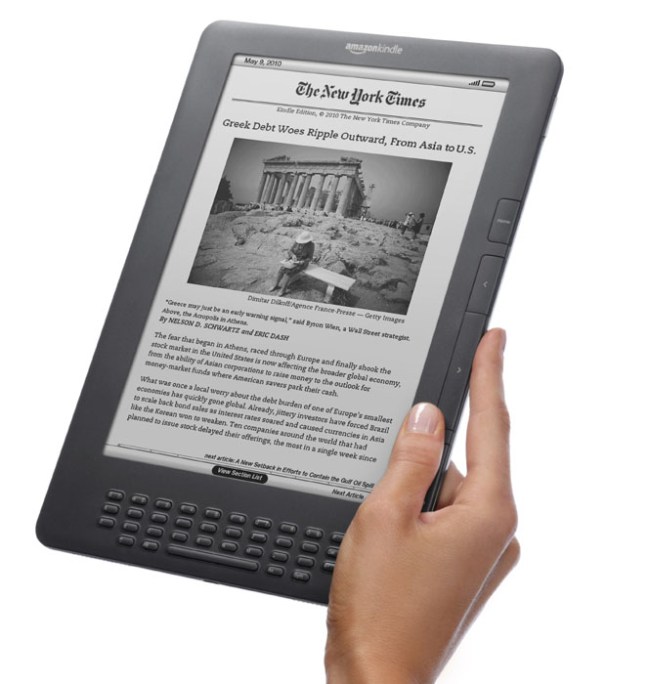 Listen up any electronics manufacturers hunting around for ideas for a revolutionary product to take the gadget market by storm – how about making an e-reader that students actually want to use?
Listen up any electronics manufacturers hunting around for ideas for a revolutionary product to take the gadget market by storm – how about making an e-reader that students actually want to use?
According to results from a long-term study that looked at how students utilized a Kindle DX e-reader for their course studies, the e-reader, while being taken up by the general population in ever increasing numbers, lacks the kind of functionality that would make it popular among students. Amazon’s Kindle DX has a larger screen (9.7 inches) than the Kindle, and currently retails for $379.
The University of Washington (UW) was one of seven US universities taking part in a pilot study of the Kindle DX. Researchers at UW looked at how students involved in the pilot study did their academic reading.
A report on the results of the study published on Monday on the UW’s website says that students want a device that allows them to more easily take notes, check references and view figures. Switching between reading styles (such as taking a look through an article’s illustrations or references prior to reading the complete text) is another feature that e-readers need to incorporate if companies like Amazon want to have a chance of making some headway in the e-reader market for students.
One of the study’s authors, Alex Thayer, said “There is no e-reader that supports what we found these students doing.” Thayer, a UW doctoral student in Human Centered Design and Engineering, continued, “It remains to be seen how to design one.”
Another of the study’s authors, Charlotte Lee, a UW assistant professor of Human Centered Design and Engineering, said that “most e-readers were designed for leisure reading – think romance novels on the beach,” pointing out that “reading is just a small part of what students are doing.”
Seven months into the study, less than 40 percent of the students were regularly doing their academic reading on the Kindle DX. Students unhappy with the device put this down to things like its lack of support for taking notes and difficulty in looking up references. The report points out that Amazon has since improved some of these features on the DX.
Interestingly, among the 60 percent or so of students who continued to use the e-reader, some read near a computer, enabling them to look up references if necessary, while others simply tucked a piece of paper into the case so that they could write notes by hand if they needed to.
According to Lee, “e-readers are not where they need to be in order to support academic reading,” although she predicts that it’ll happen sooner than we think.
An e-reader specifically tailored to suit the needs of students would be a surefire success for any company that produced it – so long as they could make it affordable for cash-strapped students.
Editors' Recommendations
- Best Kindle deals: Get Kindle Unlimited for free
- How to convert a Kindle book to a PDF
- The 5 best Kindle alternatives in 2024
- The Kindle Paperwhite now comes in two stunning new colors
- Quick! Amazon is having a rare Kindle e-reader sale today


